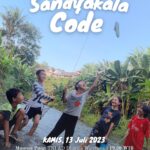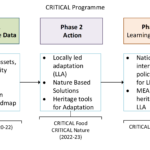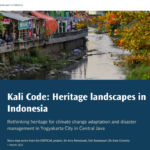Exploring the literature:
A part of our research project we are reviewing existing academic literature relating to risk, value and cultural heritage. We are trying to understand the current thinking on cultural heritage and risk assessment. Asking, what is currently done, what things are included or missing, and are there any existing tools we could use or adapt? So far, we have been reading a range of academic papers and textbooks on the subject and there are some interesting themes emerging.
Firstly, it is clear that the majority of risk assessments that aim to protect or support the management of cultural heritage are focussed on tangible things. These may be buildings or archaeological sites. Intangible things, such as language, traditions and beliefs are less likely to be considered in a risk assessment and very very few tools or methods even try to tackle this aspect of heritage. Yet, tangible and intangible are both important. This made me realise that we need to understand and perhaps even define what we mean by heritage in our project.
We are working across diverse locations and our team are exploring a range of heritage from customs and beliefs to physical structures. Sharing our understanding of what heritage is in these regions and what it means to people is a really important aspect of our work.
Transparency in diversity
The reason it is important becomes clear when you return to the risk and heritage literature review. If we agree that cultural heritage is important in shaping who we are and what we do, therefore it is important for disaster management and climate change adaptation. Culture plays a crucial role in ensuring effective responses to the hazards we face. And as Harison (2013) notes, the context in which heritage is deployed is crucial. So context is critical and relates to how we value heritage but also the literature argues that cultural heritage can lead to vulnerabilities. Cannon (2015) discusses how culture influences vulnerabilities to hazards at a local level.
So what have we learnt so far ?
Culture is dependant on context and it is both tangible and intangible. It can create vulnerabilities as well as be vulnerable itself, but it also shapes peoples adaptive capacity.
What we are discussing at the moment as a team is that risk assessment that attempts to consider cultural heritage should look at both tangible and intangible aspects and crucially engage with those people who live and experience that cultural heritage. Surprisingly our literature review so far, has found that none of the academic papers we have identified have engaged with the local communities in a meaningful way. Where they have discussed value or significance or vulnerability of heritage they have interviewed experts but not attempted to explore or integrate the values and experiences of those who should ultimately be part of, and therefore benefit from, the risk based decision making.
In one way the literature reassures us, as a team, that we are approaching things correctly. We are not trying to work on one aspect of heritage but let the context drive our direction and we are focussed on understanding and supporting local communities perspectives on heritage. In these difficult economic times let’s hope that our work can continue.
Understanding how people and their heritage are impacted by hazards and climate change is crucial for disaster management and adaptation. What do you value?
References:
Harison, R., 2013 Heritage Critical Approaches, Routledge
Cannon, T., 2015 Chapter 5 Disasters, Climate Change and the Significance of Culture; In Cultures and Disasters: Understanding cultural framings in disaster risk reduction, Eds. Kruger, F., Bankoff, G., Cannon, T., Orlowski, B and Schipper, S. Routledge






